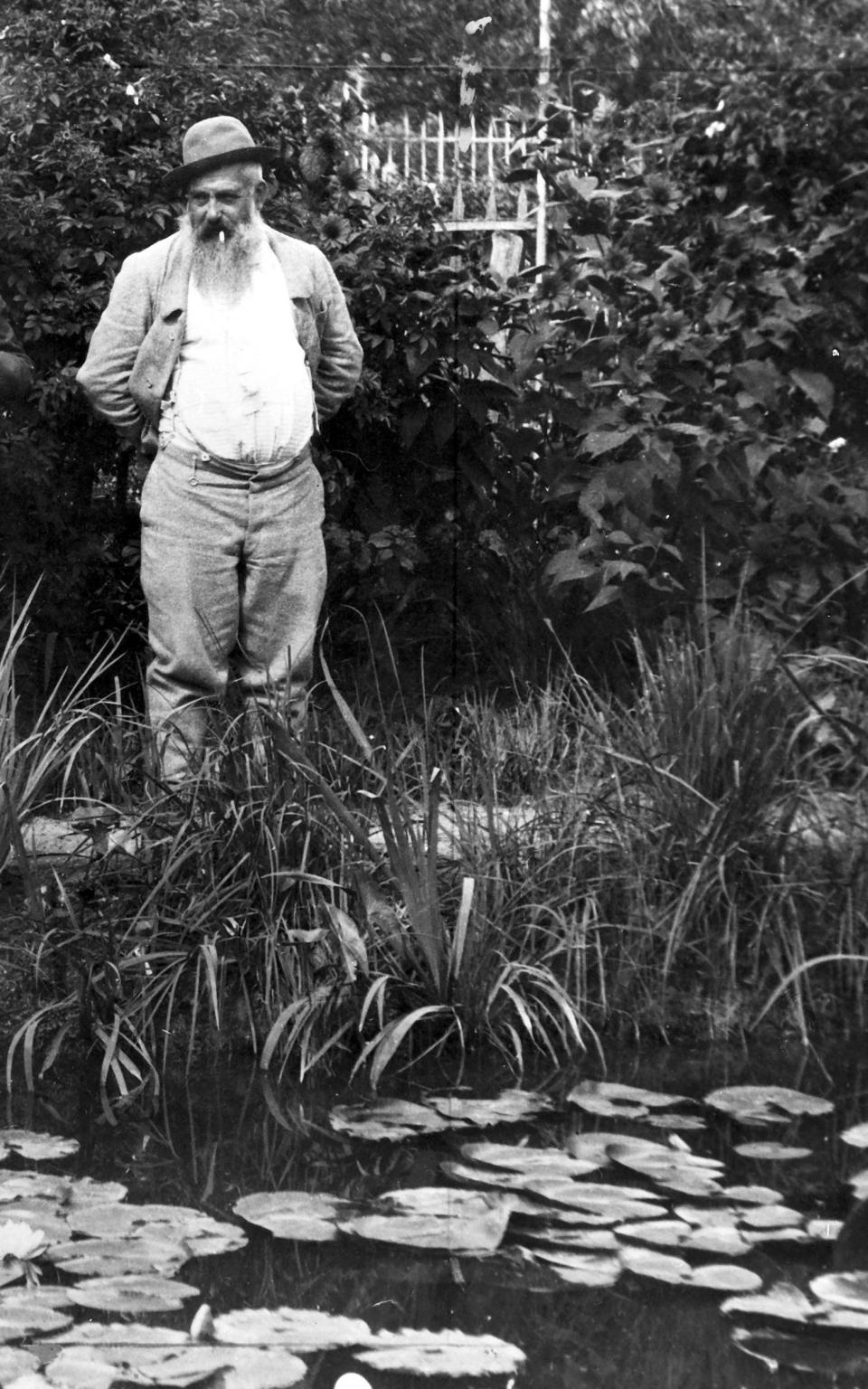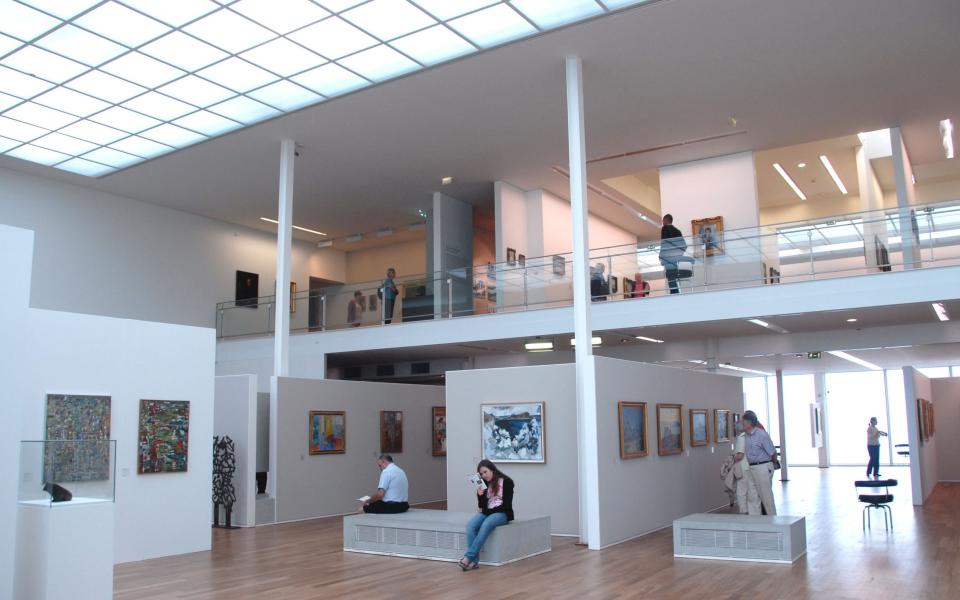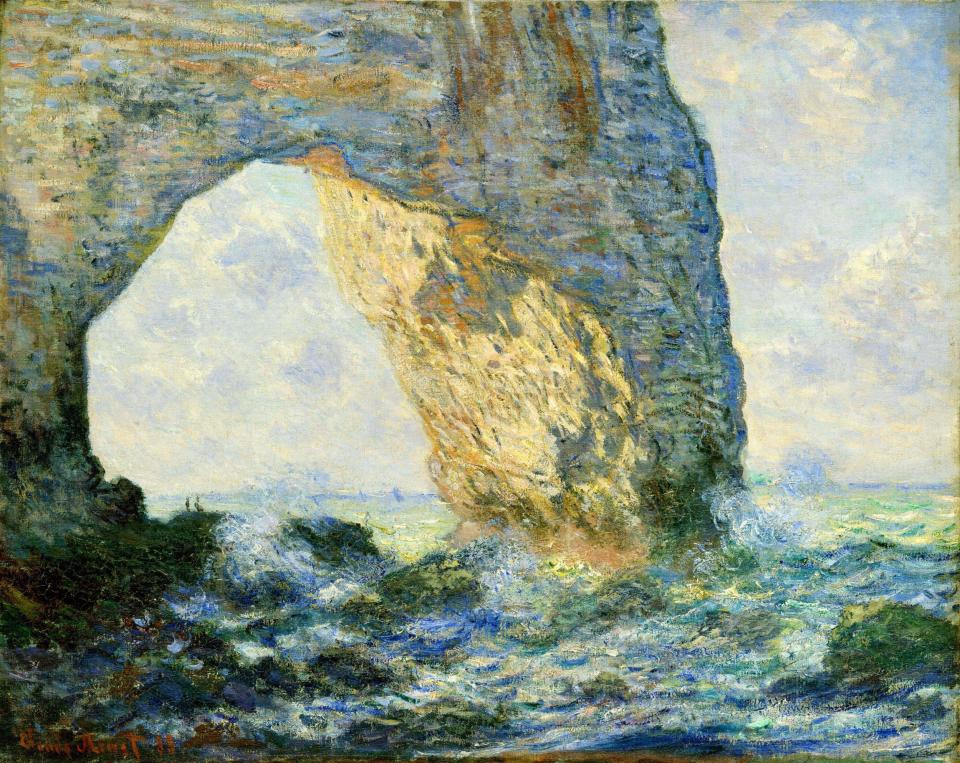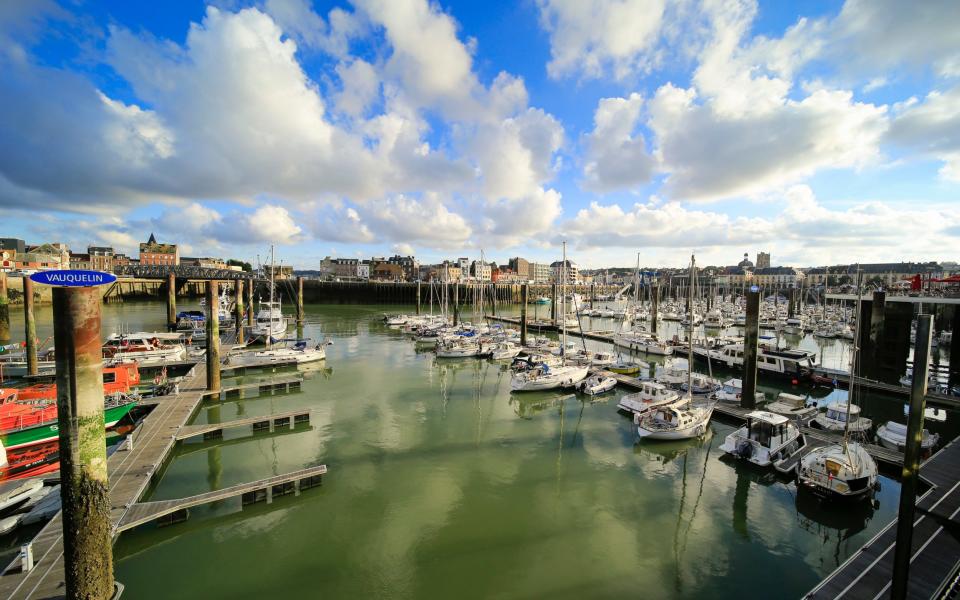It is exactly 150 years since a group of painters on the fringes of the French art scene put together an exhibition of their work in a photographer’s studio in Paris. It was the beginning of perhaps the most famous art movement of all time: Impressionism.
But, although the breakthrough took place in Paris, the style and philosophy of these artists were formed on the beaches and seaside resorts of Normandy, where Claude Monet grew up 20 years earlier. Here, Eugène Boudin, a local painter from Honfleur, encouraged the young artist to set up his easel outside and paint spontaneously. The images of sky, cliffs, sea and beach that resulted from quick brushwork and vibrant colors are now some of the most striking and popular images in Western art.
However, it is not the luminous skies and the changing mood of the sea and light that drew Monet and so many other great 19th century French painters to this coast. It was the glamor of the beach resorts. Here the fashion for sea bathing, imported from resorts such as Brighton and Weymouth, was revolutionizing the prettiest beaches and fishing villages on the Normandy coast.
Grand hotels were opening to cater for tourists and new rail links from Paris meant that the bourgeoisie could reach the coast in a few hours and count themselves among the public on what was known as the “summer boulevard of Paris”. .

While so many of their British counterparts have faded, most of the 19th-century resorts around the mouth of the Seine continue to thrive (only Le Havre, which took a heavy battering during World War II World, having lost its essential charm. ). The coast as a whole is still as captivating as the day Monet first set up his easel. Here are the highlights.
Honfleur
The scenic backdrop of Honfleur, overlooking the mouth of the Seine, is the Vieux Basin, the old harbor that used to be enclosed by the defensive walls. It is now a picturesque place to moor a yacht or enjoy quayside moules marinères. Beyond that are back streets lined with ancient wooden houses and, in the market, a very unusual church, built in the 15th century after the English occupiers were kicked out.
The local craftsmen were shipwrights and had no stone, so they built the wooden roof in the shape of two upturned ship hulls. Monet and other Impressionists often painted here, staying in the Ferme St Siméon. Eugène Boudin was born here and this summer the local museum, which is named after him, is celebrating the bicentenary of his birth in 1824 with a special exhibition of his work, with others by his contemporaries including Courbet and Monet (museums -honfleur.fr ).


Trouville
Trouville was one of the most fashionable resorts from the 19th century on the Normandy coast until it was overshadowed by the development of its neighbor Deauville in the 1860s. It still has the air of prosperity, although its grand hotels have been converted into apartments. One of these was the Hotel des Roches Noires, which Monet famously depicted in 1870 with its flags stretched taut by the sea breeze. Boudin painted many scenes of vacationers gathering on the sand here.
Le Havre
One Monet painting in particular, Impression, Sunrise, to prove particularly important in the history of the movement. He made his quick sketch of a brilliant orange sun shining through the mists of the harbor from his hotel room window in Le Havre in 1872, and gave it the title when it was hung in the exhibition. A critic who reviewed the show took the word “understanding” and it stuck.
You can still find the site, on what is now the Quai de Southampton, but the original buildings were destroyed during the liberation of France. Today, many tourists who come to Le Havre are fans of modern architecture. The neat grids of Auguste Perret’s apartment blocks are examples of this, and the cathedral’s tall spire is certainly one of the largest buildings ever constructed in concrete.


Art lovers will be drawn to another modernist building – the Musée d’Art Moderne André Malraux, which has one of the best collections of Impressionist art in France, after the Musée d’Orsay. Most of the paintings were donated by the local collector’s family and include works by Boudin, Monet, Renoir, Pissarro, Sisley, Degas, Courbet and Corot. It celebrates this summer’s impressionist anniversary with a photography exhibition in Normandy from 1840-1890 (muma-lehavre.fr).
Étretat
One of the smallest but most scenic resorts on the Normandy coast, the beach at Étretat is framed by two large limestone cliffs, each a spectacular rock arch. The famous arch of Manneport, at the western end of the bay, was a favorite subject of Monet, who returned here several times to try to capture the contrasting effects of light and weather on the sea-struck cliffs (the beach at Fécamp nearby too. fascinated him). Courbet and Boudin also painted here, Pissarro, Manet and Renoir worked nearby and Maupassant, Offenbach and Zola kept the villas on the slopes behind the bay.


Dieppe and Pourville
Dieppe was the first town in Normandy to be developed as a beach resort, but it was too windy for comfort, and was rapidly falling out of favor by 1830. It remains one of the prettiest ports on this stretch of the coast, and it is a wonderful place. a place to enjoy the Plateau de fruits de mer, and the Château museum has paintings by, among others, Renoir and Pissarro, who both came here to paint. Monet also visited, although he preferred the rugged cliffs and quieter atmosphere of nearby Pourville-sur-Mer, where he built a house, and Varengeville-sur-Mer.


Buckwheat
One of Monet’s most famous series of paintings, made between 1892 and 1895, shows the west facade of Rouen cathedral in different weather and at different times of the day. If you can’t find the right angle when you visit, it’s because he installed himself in the dressing rooms on the first floor of the (appropriately refined) women’s clothing store in the opposite building.


One of 30 cathedral paintings is in the Musée des Beaux-Arts which has an impressive collection of old masters and Impressionists. This summer’s special exhibition features David Hockney’s images of the Normandy countryside (mbarouen.fr).
Giverny
Monet considered that his greatest work of art was not his paintings, but the garden he made at his country manor in Giverny. He spent about 35 years planting and replanting, felling trees and diverting the river to make his lily pond, which gave rise to his water lily paintings.


The only works left here are replicas, but the house and garden are a must-see for Monet fans (fondation-monet.com).
Fundamentals
DFDS (dfds.co.uk) runs daily car ferry services between Newhaven and Dieppe. Standard returns from £87 each way (one car with two passengers).
Nick Trend was a guest at the Ferme St Siméon (relaischateaux.com), which looks out across the mouth of the Seine at Honfleur. It has deep connections with the Impressionists: Boudin often stopped to drink, eat and paint, and Monet (now staying in room 22) was a regular visitor. This summer, the hotel has placed replicas of more than 50 paintings by famous artists who have stayed or painted here around the gardens. Double rooms from €250 (£215) per night, breakfast included.